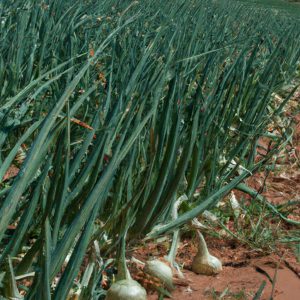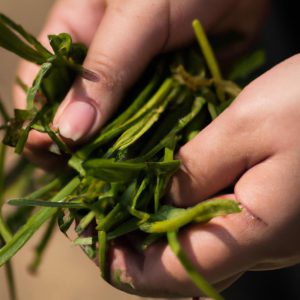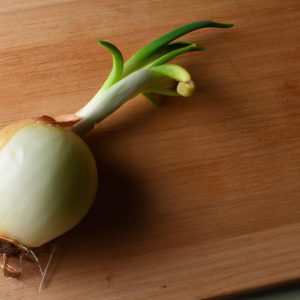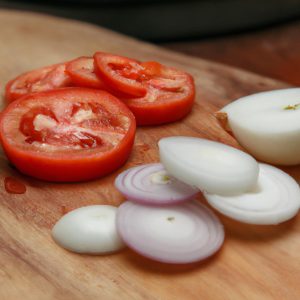If you’re a cooking enthusiast, you’ve probably come across Cipollini onions in various recipes. These small, flat onions have a sweet and mild flavor that makes them a popular ingredient in many dishes. However, peeling them can be a bit of a challenge, especially if you’re not sure how to do it correctly. In this article, I’ll show you how to peel Cipollini onions step-by-step, so you can add them to your recipes with ease.
Introduction

A. Explanation of what Cipollini onions are
Cipollini onions are small, flat onions that are about the size of a golf ball. They are usually sweeter and milder than regular onions and have a slightly flattened shape. Cipollini onions are a popular ingredient in many recipes, especially Italian cuisine.
B. Importance of peeling Cipollini onions
Peeling Cipollini onions is an essential step in preparing them for cooking. The outer skin of the onion is tough and papery, making it difficult to eat. Peeling the skin off the onion allows the sweet and mild flavor of the onion to shine through and enhances the overall taste of the dish.
C. Brief overview of the steps to peel Cipollini onions
Peeling Cipollini onions involves a few simple steps. First, you need to gather the necessary tools. Then, you’ll need to prepare the onions by cleaning them and cutting off the ends. After that, you’ll need to blister the skin of the onions, which makes it easier to remove. Finally, you can peel the onions and use them in your recipe.
Gather the Necessary Tools

To peel Cipollini onions, you’ll need a few tools to make the process easier and more efficient. Here’s a list of the tools you’ll need and a brief explanation of each one:
A. List of tools needed
- Cutting board
- Sharp knife
- Small pot
- Slotted spoon
- Bowl of ice water
B. Explanation of each tool
1. Cutting board
You’ll need a sturdy cutting board to chop the onions and prevent them from slipping around while you’re cutting them.
2. Sharp knife
Using a sharp knife will make it easier to cut the onions and minimize the risk of injuring yourself. A small, sharp knife is best for peeling Cipollini onions.
3. Small pot
You’ll need a small pot to boil the onions in water. This helps to blister the skin and makes it easier to peel.
4. Slotted spoon
A slotted spoon is necessary to remove the onions from the boiling water without burning yourself.
5. Bowl of ice water
After boiling the onions, you’ll need to cool them down quickly to stop the cooking process. A bowl of ice water is perfect for this.
Preparing the Cipollini Onions

Preparing Cipollini onions is an essential step in peeling them. Here’s how to do it:
A. Selecting the right onions
When selecting Cipollini onions, look for onions that are firm and free of soft spots or blemishes. The onions should be about the size of a golf ball and have a slightly flattened shape. If possible, choose onions that are similar in size to ensure even cooking.
B. Cleaning the onions
Before you begin peeling the onions, you need to clean them. Rinse the onions under cold running water and use a vegetable brush to remove any dirt or debris. Dry the onions with a paper towel or a clean kitchen towel.
C. Cutting off the ends of the onions
Once the onions are clean and dry, you’ll need to cut off the ends. Use a sharp knife to cut off the root end and the stem end of the onion. This will make it easier to remove the outer skin and prepare the onion for blistering.
By selecting the right onions, cleaning them properly, and cutting off the ends, you’ll be able to prepare Cipollini onions for peeling with ease. This step is essential to ensure that the onions are ready for blistering and peeling in the next steps.
Blistering the Skin
Blistering the skin of Cipollini onions is an important step in peeling them. It makes the skin easier to remove and enhances the overall flavor of the onion. Here’s how to blister the skin of Cipollini onions:
A. Explanation of the blistering process
To blister the skin of Cipollini onions, you’ll need to cook them in boiling water for a few minutes. This will cause the outer layer of the onion to blister and loosen, making it easier to remove.
B. Benefits of blistering the skin
Blistering the skin of Cipollini onions has several benefits. It makes the skin easier to remove, which saves time and effort. It also enhances the flavor of the onion by caramelizing the sugars in the outer layer. This results in a sweeter and more flavorful onion that’s perfect for cooking.
C. Tips for blistering the skin
To blister the skin of Cipollini onions effectively, follow these tips:
- Use a pot of boiling water that’s big enough to accommodate all the onions without overcrowding them.
- Add a pinch of salt to the boiling water to enhance the flavor of the onions.
- Cook the onions for 2-3 minutes or until the outer layer of the onion is blistered and loose.
- Drain the onions and run them under cold water to cool them down before peeling them.
Peeling the Cipollini Onions
Peeling Cipollini onions can be a bit tricky, but with the right technique, it can be done quickly and efficiently. Here’s how to do it:
A. Explanation of the peeling process
To peel the Cipollini onions, you’ll need to start by using your fingers to gently pull the skin away from the onion. Hold the onion with one hand and use your other hand to pull off the skin. Be careful not to pull too hard, as this can damage the onion.
Once you’ve removed the skin, you’ll notice that there are several layers of thin, papery skin under it. You can remove these layers by gently rubbing the onion with your fingers. Again, be careful not to damage the onion.
B. Tips for peeling the onions
Peeling Cipollini onions can be a bit time-consuming, so here are a few tips to make the process easier:
- Blister the skin: Blistering the skin of the onions before peeling them makes it easier to remove the skin. This is because the heat causes the skin to separate from the onion, making it easier to peel.
- Use a sharp knife: A sharp knife will make it easier to remove the ends of the onion and cut off any remaining skin. Dull knives can damage the onion and make it harder to peel.
- Keep the onion whole: Keeping the onion whole while peeling it can make it easier to handle. If you cut the onion into smaller pieces before peeling it, it can be more difficult to remove the skin.
C. How to avoid damaging the onions
Cipollini onions are delicate, so it’s important to handle them with care while peeling them. Here are a few tips to avoid damaging the onions:
- Use your fingertips: When peeling the onions, use your fingertips instead of your nails. This will help prevent you from accidentally damaging the onion.
- Don’t peel too hard: Peeling too hard can damage the onion and make it harder to remove the skin. Instead, use a gentle touch and let the skin come off naturally.
- Be patient: Peeling Cipollini onions can take some time, so be patient. Rushing the process can lead to mistakes and damage to the onion.
Conclusion
Peeling Cipollini onions may seem intimidating at first, but with this step-by-step guide, you’ll be able to do it with ease. Remember to gather all the necessary tools, prepare the onions, blister the skin, and peel them carefully to avoid damaging the onions.
By following these steps, you’ll be able to add the sweet and mild flavor of Cipollini onions to your favorite recipes. Whether you’re making a classic Italian dish or experimenting with new flavors, peeling Cipollini onions correctly is an essential part of the cooking process.
At onionfacts.com, we believe that cooking should be enjoyable and accessible to everyone. That’s why we strive to provide informative and easy-to-follow guides like this one. We hope that this guide has helped you learn how to peel cipollini onions, and we encourage you to try incorporating them into your next meal. Happy cooking!







